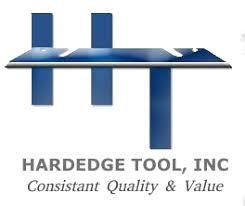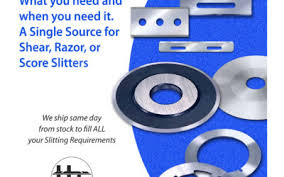The Basics of Converting Knives and Blades
Industrial knives and blades are a key component in many business operations. In order to ensure that they’re performing as they should, it’s important to be familiar with the types of blades on the market, as well as their associated applications. One type of blade that is gaining traction in industrial settings is converting knives and blades, which offer a variety of advantages over traditional options. Let’s explore what makes them so special.
What is a Converting Knife?
A converting knife or blade is a specialized type of cutting tool used for precision trimming and slitting operations in industrial environments. These knives feature an ultra-sharp edge made from high-grade steel, allowing them to easily cut through tough materials such as paper, plastics, rubber, foil, fabric, composite materials, and more. Compared to traditional blades, converting knives provide superior performance due to their sharpness and durability.
Benefits of Converting Knives and Blades
When used in industrial settings, converting knives can provide a variety of advantages over other types of blades. These include:
– Improved accuracy and consistency when trimming or slitting.
– Greater durability – converting knives are designed to withstand the rigors of high-volume operations.
– Reduced waste – due to their sharpness, converting knives help eliminate unnecessary scrap from the production process.
– Quicker setup times – since no additional tooling is required for installation, set up time is shorter than traditional blades.
– Lower cost – due to their superior performance and longer lifespan, they offer lower per unit costs compared to other blade options.
Advantages of Converting Knives
Converting knives offer numerous advantages over traditional cutting tools. For starters, they are designed specifically for precision trimming and slitting tasks—meaning they can handle these tasks quickly and accurately without sacrificing quality or safety. Additionally, since they are made from high-grade steel with an ultra-sharp edge, they can last longer than other types of blades while still providing superior performance. Finally, converting knives require less maintenance than other types of blades because the edges do not need to be sharpened frequently (if at all).
Any disadvantages?
The main disadvantage of using converting knives is the price tag. They are typically more expensive than traditional blades, due to the high grade of steel used in their construction and superior edge quality. Additionally, since they require less maintenance, you may not be able to achieve the same level of performance with cheaper alternatives.
Converting knives and blades offer many advantages over traditional cutting tools, such as superior performance, longer lifespan, and less frequent maintenance. While they can be more costly upfront than other types of blades, their long-term value makes them a valuable investment for businesses looking to maximize efficiency and accuracy in trimming and slitting operations. With proper care and use, converting knives can last for years.
What are converting knives used for?
Converting knives are primarily used in industrial settings for precision trimming and slitting operations. They can be used to cut through various materials such as paper, plastics, rubber, foil, fabric, composite materials, and more. Additionally, they can also be used to create precise patterns or die-cut shapes with ease.
How to Use Converting Knives
When using converting knives, it is important to take certain precautions. First, use a cutting board or other appropriate surface when trimming and slitting—never make contact with the work table or hands. Secondly, be sure to wear safety equipment such as gloves and glasses when handling sharp tools. Finally, always inspect the knife before use for any signs of damage or wear-and-tear. If any issues are present, it is best to replace the blade rather than risk injury by attempting to fix it yourself.
Converting knives and blades are a great solution for businesses looking to increase accuracy and efficiency in their cutting tasks.
In short, converting knives have become increasingly popular in industrial settings due to their precision and durability. They are designed specifically for trimming and slitting tasks—allowing them to handle these tasks quickly and accurately without sacrificing quality or safety—and feature an ultra-sharp edge made from high-grade steel that lasts longer than other types of blades while still providing superior performance. With minimal maintenance needs compared to other types of blades, converting knives are an ideal solution for any business looking for reliable cutting tools with excellent results.
We shared the Basics of Converting Knives and Blades and whether you’re converting paper, foil, or film, we stock blades for your job.
Converting Blades for Packaging Industry
Contact Hardedge Tool for all of your Industrial Razor Blade, Converting Blades and Film Slitting Blade needs! (859) 581-0770 FAX: (859) 581-0776 Blog Written by Foster Technology Group

